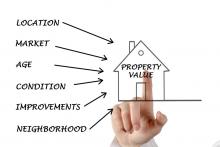
The appraiser faces many new challenges appraising after a natural disaster. To avoid problems there are several steps an appraiser can take. Keep in close contact with your clients about any outstanding assignments. Notify them of any delays you are experiencing. Make your client aware of the new challenges facing your appraisal practice. Questions to ask your client: Will you need additional services such as a re-inspection or revising the effective date? Are you aware that typical sources of data may no longer be available? Don’t assume everyone is aware of the problems you now face. Maintain open and candid communication between you and your clients. This will go a long way to avoiding future problems or misunderstandings.
As far as your appraisal process is concerned, at the end of the day, it boils down one thing. How do I provide credible valuation services in the aftermath of this disaster? To answer this question, you might want to consider available publications. One of particular relevance is GUIDE NOTE 10: Developing an Opinion of Market Value in the Aftermath of a Disaster. This Appraisal Institute publication is available on their website. The following is an excerpt.
Summary of Standard Practices
- Developing an opinion of value in the aftermath of a disaster might require competency that surpasses or is different from that required prior to the disaster.
- The characteristics of the applicable definition of market value must be carefully examined when appraising in a chaotic or unstable market.
- Valuation in the aftermath of a disaster requires special attention to the fundamental appraisal principles of supply and demand, anticipation, change, substitution, contribution, externalities, and balance.
- Transactions that occurred prior to the disaster will not reflect the same market conditions as those occurring after. Ideally, comparable data must be selected from the same market area and must be subject to the same market conditions as the subject property.
- In appraisal assignments for which the date of value is a retrospective date prior to the disaster, the appraiser must rely on comparable sales that occurred prior to that retrospective value date.
- In appraisal assignments for which the date of value is a retrospective date prior to the disaster, the appraiser must rely on the best available information concerning the nature of the subject property as of the date of value. Such an appraisal would be based on one or more extraordinary assumptions about the property condition and other characteristics that are as presumed to be true in the appraisal assignment.
- Unless the appraiser possesses the requisite competence to make judgments about these matters, the appraiser must not take on assignments that require competency that is beyond that of a real property appraiser.
Many logistical problems not normally faced by appraisers may also come into play. What is expected by the client regarding inspections (or is there anything to inspect)? How will access be gained to a property if it is abandoned or severely damaged? How should unknowns (i.e., hidden damage, the potential for mold, or the timing of restoration of governmental services) be handled? Will the client (or others) provide you inspection, safety, or engineering reports? What is the level of data collection and analysis required (scope of work) for the intended use? How would your post-disaster scope of work differ for mortgage lending versus insurance appraisals? As discussed earlier, communication with your client is paramount in answering these questions.
The above questions only scratch the surface of the many issues an appraiser may face when performing an appraisal in the aftermath of a disaster. To learn more, an appraiser may refer to AI’s Guide Note or publications from other organizations’ for guidance before accepting or completing appraisal assignments. As always, the responsibility for producing an appraisal with credible assignment results rests squarely on the appraiser’s shoulders.
